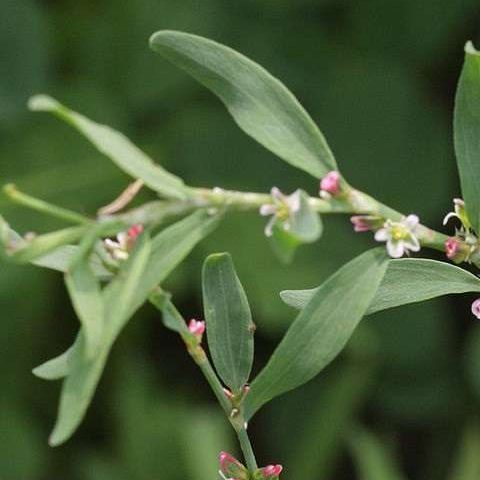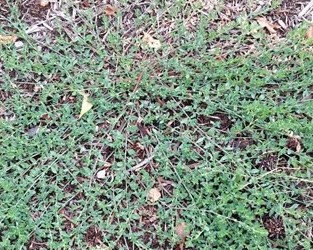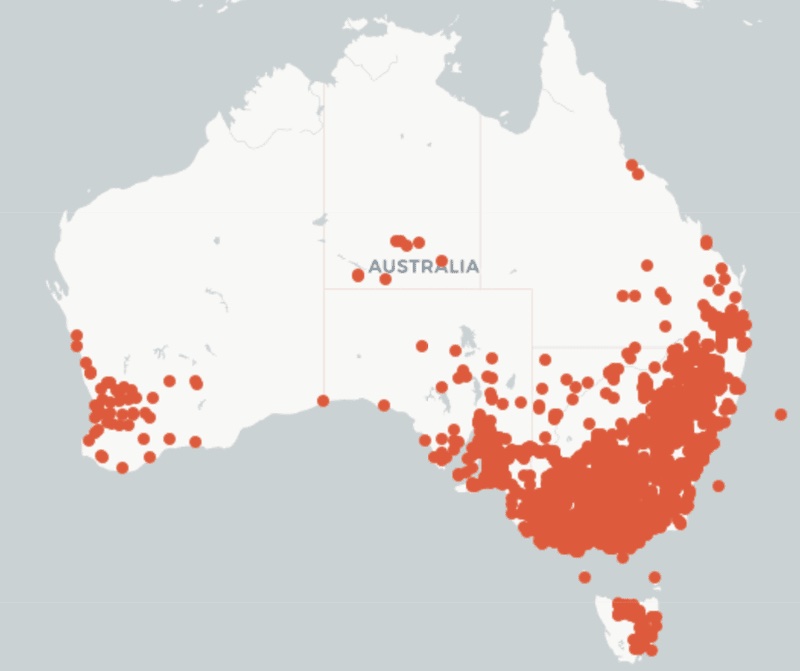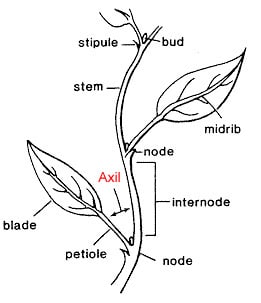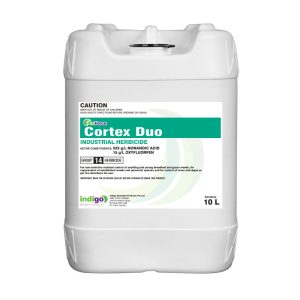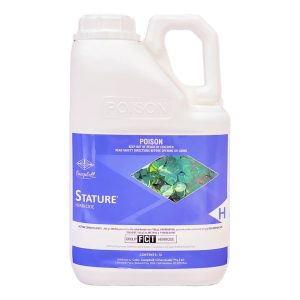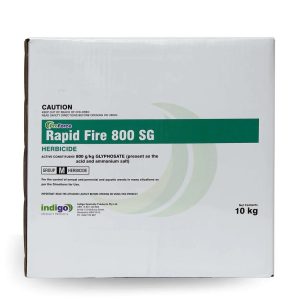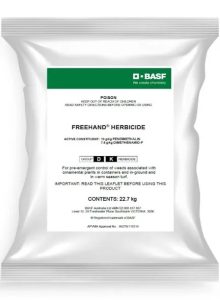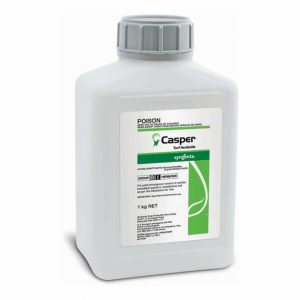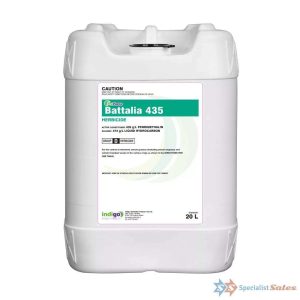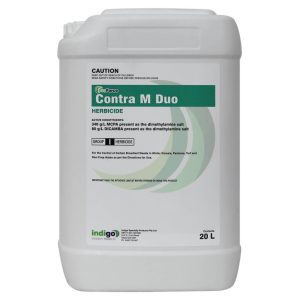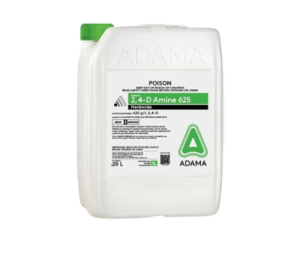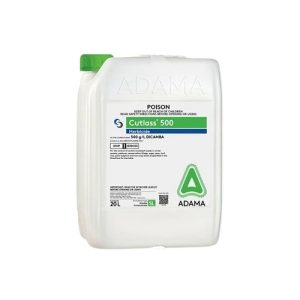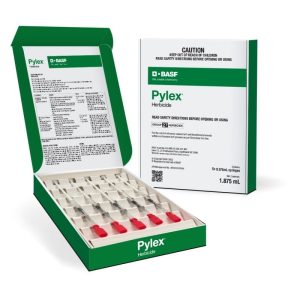Wireweed (Polygonum aviculare).
Wireweed (Polygonum aviculare) is also known as Prostrate Knotweed, and Knotgrass. It is a common weed of amenity turf. This weed favours worn, and compact soils. It is common on council sports grounds, and control of this weed can be very difficult.
Wireweed thrives in irrigated areas, is very resistant to wear, and often seen in compact goal mouths.
After you read this you will be able to:
- Identify Wireweed.
- Know its habitat and lifecycle.
- Know the best options to control it.
Why is Wireweed a Problem?
- It forms dense vegetative mats, and has a strong, deep taproot.
- This weed spreads quickly, and outcompetes other plants for water, nutrients, and light.
- Once it gets a hold it is difficult to control. This is often the case with compact soils.
- It produces large numbers of seeds. These can remain viable for several years.
- Unfortunately, it has a tendency to be a problem at the most inconvenient time. It often tends to germinate when you try to establish turf.
- This weed is allelopathic to Couchgrass. It inhibits the germination of seeds and the growth of seedlings.
- It is often mistaken for Spotted Spurge or Common Purslane. This can make control more difficult.
- Knotweed causes dermatitis in sheep and humans. Horses and stock that eat large amounts of seed may develop enteritis.
- Wireweed may also contain high levels of toxic nitrates. Horses can die from nitrate poisoning after they eat this weed in hot dry weather.
Table Showing Differences between Wireweed, Spurge and Purslane.
Weed | Spreading | Leaves | Leaf shape | Leaf Hairs | Milky Sap | Flower Colour | Reproduction |
Knotweed | Yes | Alternate | Lanceolate or elliptic to oblong | None | No | White to green | Seed |
Prostrate Spurge | Yes | Opposite. Often has a dark spot in the centre of the leaf. | Small and oval | None | Yes | White | Seed |
Purslane | Yes | Alternate or opposite | Club shaped and fleshy | None | No | Yellow | Seed and stem fragments |
Wireweed favours a soil pH above five. Soil compaction and heavy N use also favour it, but Wireweed also tolerates drought and low fertility soils.
Knotweed is a good indicator weed of soil compaction.
Wireweed Identification.
This is an aggressive, low-growing Summer annual or biennial dicot weed.
- It has small oval leaves that have a purple sheath around the their base.
- The branch leaves are about half the size of the stem leaves.
- The stems root at the nodes.
- It flowers mainly in the Autumn and the Spring. A this time you can see a large numbers of flowers along the base of the leaves.
- The stems have multiple branches and appear wiry.
Photosynthetic Pathway: This is a C3 weed.
How Does Wireweed Reproduce?
- It only grows from seeds and produces around 50 seeds per plant.
- Seed densities can reach 200 to 5,000 seeds /m2. The seeds tend to be in the top 5 cm of the soil.
- The seeds can remain viable for up to 60 years. They need soil moisture to germinate.
- The deeper the seeds are in the soil profile the more likely they are to remain dormant.
This explains why this weed is a problem when you disturb a large seed bank and irrigate. The seeds germinate and then grow rapidly.
You often see this problem when you re-surface sports grounds or fairways.
- It is often mistaken for a grass when it germinates due to its long, dark green leaves.
- In warm weather it then grows rapidly.
- Any of the seeds that don’t germinate in the Spring, then enter a secondary dormancy period.
- This means that there tends to be no more germination over the Summer months.
- The leaves have no hairs.
- This weed has a strong, deep, fibrous tap root.
- It tends to germinate when soil temperatures are around 4 °C.
- The stems do not end in a flower head. Instead the small flowers occur in the leaf axils.
Wireweed Control.
Weed Management Calendar for Wireweed.
Management Calendar for Wireweed | ||||||||||||
Summer Annual or Biennial | ||||||||||||
Months | Jan | Feb | Mar | Apr | May | Jun | Jul | Aug | Sep | Oct | Nov | Dec |
Germination | ||||||||||||
Active Growth | ||||||||||||
Flowering | ||||||||||||
Pre-emergent Herbicide | ||||||||||||
Post emergent Herbicide | ||||||||||||
What is the Treatment Threshold for Wireweed?
Cultural Control of Wireweed.
Here are some tips on cultural options to control this weed in turf.
- This weed thrives in compact soils. This means, if you relieve any soil compaction it creates conditions less favourable for it to grow.
- Prostrate Knotweed has a thin taproot. It isn’t very strong and you can remove this by hand.You are best to do this when it is young and the soil is moist.
Chemical Control of Wireweed.
Pre-emergent Control of Wireweed.
- This should be in the late Autumn to the early Winter.
- You may need to make several applications to get this weed under control.
- UK research estimates that you will need to treat it for 4 to 7 years to exhaust any seedbank.
Pre-emergents.
Product Name | Active Ingredient | Rate | Safe Turf Types | Target Weeds | Duration | |
Barricade | Prodiamine 480 g/L | 1 to 4 L/Ha | Couch, Kikuyu, Buffalo, Zoysia, Paspalum, Queensland Blue. | Winter Grass, Summergrass, Crowsfoot Grass, African Lovegrass, Parramatta Grass, Crabgrass, Paspalum. | Up to 6 months | Group 3 |
Spartan | Prodiamine 480 g/L | 1 to 4 L/Ha | Kikuyu, Buffalo, Couch, Zoysia, Seashore Paspalum, Queensland Blue. | Winter Grass, Summergrass, Crowsfoot Grass, African Lovegrass, Parramatta Grass, Crabgrass, Paspalum. | Up to 6 months | Group 3 |
Specticle | Indaziflam 200 g/L | 125 to 250 ml/Ha | Couch, Kikuyu, Buffalo, Zoysia | Winter Grass, Summer Grass, Crowsfoot, Annual grasses & broadleaf weeds | Up to 8 months | Group 29 |
Pennmag | Metolachlor 960 g/L | 2 L/Ha | Turf | Summer Grass, Crowsfoot, Winter grass | 3 to 4 months | Group 15 |
Battalia | Pendimethalin 435 g/L | 2.3 to 3.4 L/Ha | Couch, Kikuyu, Buffalo | Winter Grass, Summer Grass, Crowsfoot Grass, Broadleaf weeds | 4 to 5 months | Group 3 |
Ronstar | Oxadiazon 20 g/Kg | 150 to 200 Kg/Ha | Couch, Kikuyu, Zoysia, Buffalo. | Winter Grass, Crowsfoot Grass, Summer Grass, Sorrel, Oxalis. | Up to 3 months | Group 14 |
Dimension EW | Dithiopyr 240 g/L | 1.75 to 3.5 L/Ha | Couch, Kikuyu, Kentucky Bluegrass, Buffalo, Ryegrass, Zoysia | Crabgrass, Winter Grass, Crowsfoot, Chickweed, Summer Grass. | 4 to 6 months | Group 3 |
BASF Freehand | 10 g/kg Pendimethalin 7.5 g/kg Dimethenamid-P | 100 Kg/Ha | Couch, Kikuyu, Queensland Blue, Buffalo, Zoysia | Amaranth, Annual ryegrass, Bittercress, Mexican clover, Chickweed, Crowsfoot grass, Dandelion, Deadnettle, Fat hen, Black Pigweed, Mustard, Pigweed, Prickly lettuce, Shepherd’s purse, Summer grass, Toad rush, Wireweed | 4 to 6 months | Group 3 |
Post Emergent Control of Wireweed.
- Control with post emergents works best when Knotweed is young. Ideally it should still be in the seedling stage.
- Once it establishes and hardens off, it is more difficult to control.
- When Knotweed is less than 75 mm in diameter, you can control it with 2,4-D. However, even after this it may grow back, from buds on the crown of the plant.
- Agriculture uses Topramezone to control Knotweed up to the 6- leaf stage.
- Products that contain Dicamba usually provide better results. However, you can’t use these safely on Buffalo Grass.
Post Emergent Options:
- 2,4-D. This tends to burn the top off the plant but it then grows back.
- Warhead Trio. Warhead is safe on Buffalo grass.
- Contra M herbicide. Don’t use Contra M on Buffalo grass.
- Weed Blast MA. This is safe on Buffalo grass.
- Casper Turf. Don’t use Casper Turf on Buffalo grass.
- Dicamba. Don’t use Dicamba on Buffalo grass.
- Stature. Stature Turf Herbicide is safe on all established cool and warm season grasses. However it is not for home garden use. A non-ionic surfactant is recommended.
Table of Post Emergent Herbicides for Wireweed.
Product | Active | Chemical Group | Rate/Ha | Comments | |
2,4-D | 2,4-D | 4 | 1.8-3.2 L | Wet foliage DO NOT mow lawn for 1 week before and after use. DO NOT use on Buffalo grass (WA only). | |
Casper | Prosulfuron + Dicamba | 2 + 4 | 800g-1 Kg | Use from Autumn to Spring. Use high rates in cool months or if high weed pressure. Control takes 4 to 6 weeks. Use an NIS at 0.25 to 0.5% v/v. | |
Contra M. | Dicamba + MCPA | 4 | 6.5 L | Apply in 250 to 400L water. DO NOT use on Buffalo grass. Do not mow for 2 days before or after use or fertilise within two weeks. | |
Dicamba | Dicamba | 4 | 1.2 L + 3.2 L of 2,4-D Amine 625 g/L | Use a minimum of 1000 L/Ha water. Do not spray on Buffalo or Bent Grass. | |
Stature | MCPA + Bromoxynil + Diflufenican | 4 + 6 + 12 | 2 L | Use to actively growing weeds. Control may take 4 to 6 weeks. You may need a repeat application in 4 to 6 weeks. Use a surfactant for difficult to wet weeds. Use in 200 to 500 L of water. Transient discolouration may occur up to 21 days after application. | |
Weed Blast MA | Bromoxynil + MCPA | 6 + 4 | 3-6 L | Use in a minimum of 500 L/Ha of water. DO NOT mow for 2 days after use. | |
Warhead | MCPA + Clopyralid + Diflufenican | 4 + 12 | 5 L | You may see discolouration on kikuyu, carpet grass and Queensland blue. Avoid any overlap. Use an NIS. | |
Post emergent Herbicide research on Wireweed.
- Among 18 herbicide treatments, only six control Knotweed over 80%.
- These include: 2,4-D, Dicamba, Metsulfuron, and Chlorsulfuron.
- Bromoxynil, Triclopyr, Clopyralid, Quinclorac, Metribuzin, Rimsulfuron, Foramsulfuron, and Trifloxysulfuron, do not give good control of Pigweed in couch.
- Diflufenican, the active in Warhead Trio, acts as a long-term pre-emergent.
Non Selective Control of Wireweed.
- Glufosinate-ammonium provides control for 4 to 6 weeks. However, it will grow back due to the limited movement of glufosinate.
- Glyphosate. You can use Glyphosate but if water quality is an issue then use ProForce Manta Ray.
The following are non-selective. They also have a long term residual and stop any re-growth.
- Renegade. Renegade stops germination for up to 12 months. This reduces the need for multiple herbicide treatments.
- Numchuk Quad. This gives effective post and pre emergent control for up to 12 months.
- Cortex Duo. Cortex Duo gives a rapid knockdown of Wireweed. It also has a residual that lasts for up to 3 months. It is safe to use around trees.
Table of Non Selective Options for Wireweed Control.
Product | Active | Group | Rate/Ha |
Glufosinate 200 | Glufosinate-ammonium | 10 | 1 to 6 L |
Rapid Fire 800 | Glyphosate | 9 | 0.9 to 1.35 Kg |
Numchuk Quad | Terbuthylazine + Glyphosate + Amitrole Oxyfluorfen | 5 + 9 + 34 + 14 | 20 to 25 L |
Cortex Duo | Nonanoic Acid + Oxyfluorfen | 14 | 7 L/1000L |
Renegade | Bromacil | 5 | 3.5 to 6.5 Kg |

